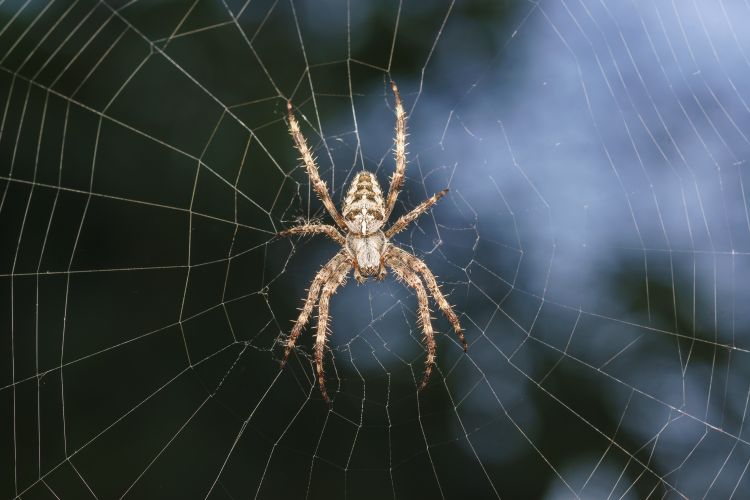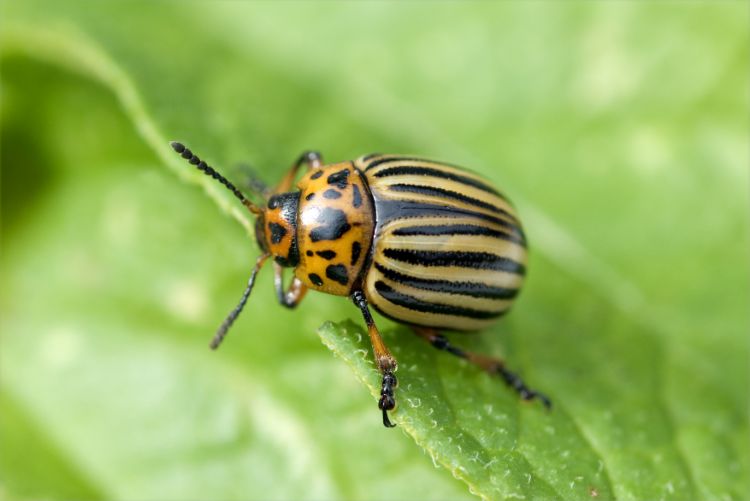It's instinct to automatically assume any bug found in your garden is going to cause some damage and should be gotten rid of. However, that's not always the case! While there are some bad bugs that need to be removed as quickly as possible, there are also many good guys that you should allow to roam around or even encourage to come into your garden space.
This list talks about some of the most common good and bugs and why they are considered beneficial or detrimental.
Advertisement
Four Good Bugs
1. Bees
1. Bees
Not at all the bothersome pest some people believe them to be, bees are actually one of the most beneficial garden insects. According to Bees Matter, one of every three bites of food that we take, is a direct result of pollination from honeybees. You can attract bees to a garden area by planting flowering plants and trees, and then protected by watching that any chemicals sprayed in the garden and yard are safe for bee populations.

Shutterstock
2. Spiders
While high on the creepy crawly scale, spiders actually play a very useful role in the garden. They are voracious eaters and will keep the population of harmful flying insects down, when their webs are left undisturbed. To be on the safe side, acquaint yourself with the venomous spiders in your area and only encourage the non-venomous ones to stay.

Shutterstock
3. Dragonflies
Another voracious eater, the dragonfly adds an element of beauty to your garden space as it flies around in the hot summer months. Dragonflies do not sting or bite (unlike bees and spiders). They help to keep the fly and mosquito populations in check.

Shutterstock
4. Ground beetles
Almost all ground beetles are considered predaceous, meaning that they feed on other insects. This makes them incredibly beneficial in the garden helping to keep the populations of non-flying insects in balance.

Shutterstock
Four Bad Bugs
1. Aphids
1. Aphids
Aphids are one of the most common garden pests, and once they are introduced into a garden, they quickly grow in population. They cause damage by sucking on the leaves and stems of plants causing distorted foliage and leaf drop if left untreated. The feeding also encourages the spread of viral diseases.

Shutterstock
2. Potato beetle
Well known for developing a resistance to insecticides, the potato beetle is one of the hardest pests to control in your garden. Potato beetles feed on the plant leaves of potato, tomato, pepper, and eggplants plants. If left untreated, they can quickly defoliate an entire plant. Rodale's Organic Life offers some great organic solutions for treating potato beetle infestations.

Shutterstock
3. Cabbage worms
The cabbage worm is extremely destructive when it gets into a garden especially if a population is left to proliferate. The adult cabbage worm will eat large holes in the leaves of brassica plants, continuing to feed towards the center of the plant until it reaches the head of cabbage. At that point, it will bore into the cabbage, rendering it unsuitable to eat.

Shutterstock
4. Cutworms
Cutworms are fat, darkly-colored segmented larvae that chew through the stems of plants at ground level. They essentially "cut" the stem. They feed at night when it's cool and dark and are not picky about what plants they eat, leaving almost everything in your garden susceptible to their damage. Prevention is much more effective than treating cutworms.
Advertisement

Shutterstock
Share on Facebook.

